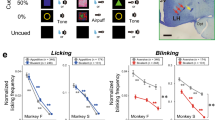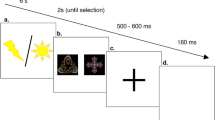Abstract
SINCE the discovery of reinforcement by intracranial stimulation in rats1, neural systems of reward and punishment have been investigated in a number of mammalian species (for example, in monkeys, cats, dogs, goats, dolphins, and man2–7), but only one study8 using a non-mammalian species (goldfish) has been published. At least one theoretical account of self-stimulation9 relies on the notion that it depends on the simultaneous excitation of two functionally distinct, but anatomically contiguous, neuronal systems. Comparative studies might be expected to throw light on this hypothesis, because the functional systems involved need not necessarily be contiguous in all species. From this point of view, the restriction of previous investigations to the class of mammals is regrettable, because the areas that appear to be primarily involved in reward and punishment, the limbic system and the hypothalamus, have developed structurally very little through the evolution of mammals10.
This is a preview of subscription content, access via your institution
Access options
Subscribe to this journal
Receive 51 print issues and online access
$199.00 per year
only $3.90 per issue
Buy this article
- Purchase on Springer Link
- Instant access to full article PDF
Prices may be subject to local taxes which are calculated during checkout
Similar content being viewed by others
References
Olds, J., and Milner, P., J. Comp. Physiol. Psychol., 47, 419 (1954).
Porter, R. W., Conrad, D., and Brady, J. V., J. Exp. Anal. Behav., 2, 43 (1959).
Wilkinson, H. A., and Peele, T. L., J. Comp. Neurol., 121, 425 (1963).
Stark, P., and Boyd, E. S., Amer. J. Physiol., 205, 745 (1963).
Persson, N., Acta Physiol. Scand., 55, 276 (1962).
Lilly, J. C., and Miller, A. M., J. Comp. Physiol. Psychol., 55, 73 (1962).
Bishop, M. P., Elder, S. T., Heath, R. G., Science, 140, 394 (1963).
Boyd, E. S., and Gardner, L. C., Science, 136, 648 (1962).
Deutsch, J. A., J. Theoret. Biol., 4, 193 (1963).
MacLean, P. D., J. Nerv. Ment. Dis., 127, 1 (1958).
Kappers, C. U. A., Huber, G. C., and Crosby, E. C., The Comparative Anatomy of the Nervous System of Vertebrates Including Man (Macmillan, New York, 1936).
Gogan, P., Arch. Ital. Biol., 102, 36 (1964).
Marsland, T. A., Glees, P., and Erickson, L. B., J. Neuropath., 13, 587 (1954).
Phillips, R. E., J. Comp. Neurol., 122, 139 (1964).
Author information
Authors and Affiliations
Rights and permissions
About this article
Cite this article
MACPHAIL, E. Positive and Negative Reinforcement from Intracranial Stimulation in Pigeons. Nature 213, 947–948 (1967). https://doi.org/10.1038/213947a0
Published:
Issue Date:
DOI: https://doi.org/10.1038/213947a0
This article is cited by
-
Intracranial self-stimulation in FAST and SLOW mice: effects of alcohol and cocaine
Psychopharmacology (2012)
Comments
By submitting a comment you agree to abide by our Terms and Community Guidelines. If you find something abusive or that does not comply with our terms or guidelines please flag it as inappropriate.



